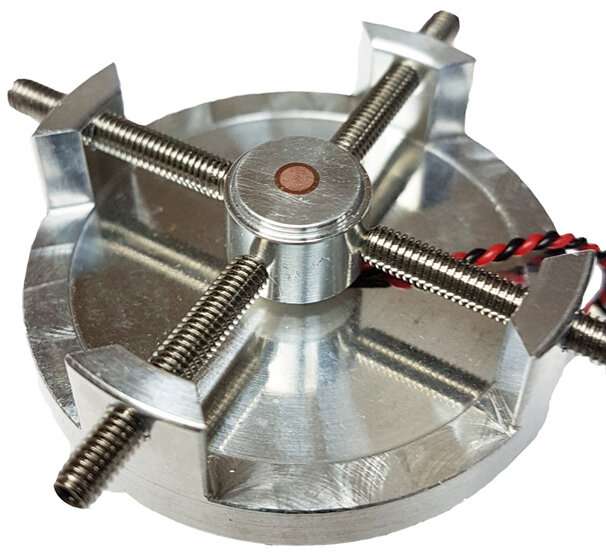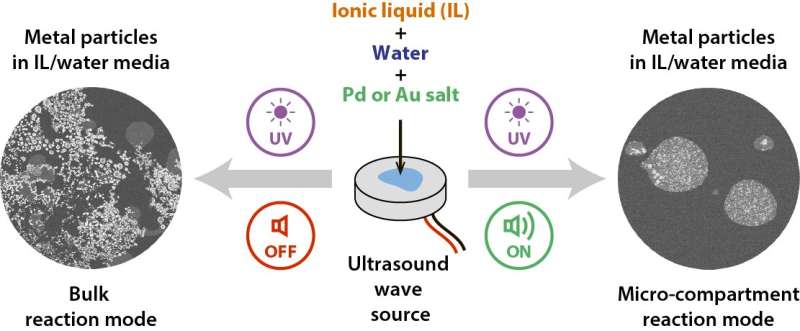Ultrasonic microreactor used to study the effect of mechanical waves by liquid-phase electron microscopy. Credit: AnanikovLab
The effect of ultrasound on the liquid phase has been visualized using dynamic electron microscopy. The use of the effect of standing mechanical waves arising in the liquid phase under the action of an external ultrasound source makes it possible to control the structure of liquid reaction media at the micro-level and influence the result of chemical transformations.
Currently, ultrasound is widely used in medicine, industry and a number of high-tech projects. The features of the interaction of ultrasound with various substances are being intensively studied with the aim of developing new methods in biology, medicine, chemistry and materials science. High-intensity ultrasound has established itself as a tool for carrying out chemical transformations under extreme conditions due to its ability to generate large amounts of energy in the liquid phase via acoustic cavitation. At the same time, standing mechanical waves in liquids have found many applications in oil and food processing technologies.
The structural study carried out by liquid-phase electron microscopy using a specially developed ultrasonic microreactor (see Figure 1) clearly demonstrated that microstructured solutions based on water and ionic liquids (organic salts existing in the liquid phase at room temperature) interact with high-frequency sound waves, which leads to a rearrangement of the structure of solutions, accompanied by a change in their physicochemical properties.
The combination of the effect of standing mechanical waves generated by ultrasound and the unique structural and physicochemical properties of the ionic liquid (IL)/water systems made it possible to carry out a controlled synthesis of demanded gold and palladium nanoparticles (see Figure 2).
Irradiation with ultraviolet light of a reaction mixture containing a water-soluble metal salt, water and an ionic liquid made it possible to obtain the desired metal particles without the use of additional reagents. At the same time, carrying out the reaction under the conditions of generation of continuous mechanical waves led to a significant decrease in the particle size due to a change in the reaction mode and localization of reagents in microcompartments, which was demonstrated by electron microscopy (see Figure 2).
Using the effect of mechanical waves generated in the ionic liquid (IL)/water system under the action of ultrasound to control the synthesis of metal nanoparticles. Credit: AnanikovLab
The study of the mechanism of the discovered phenomenon using liquid-phase electron microscopy, as well as infrared spectroscopy and nuclear magnetic resonance spectroscopy made it possible to assume that the action of mechanical waves consists in the transfer of water between different phases, as well as in its partial evaporation with the formation of a new stable state, which exists due to continuous flow of mechanical energy.
Currently, liquid media based on water and ionic liquids are widely used in various fields that are not limited only to the chemistry of nanomaterials, but also include organic synthesis, the processing of renewable natural resources, the creation of devices for the generation and storage of energy, and others. From this point of view, the discovered phenomenon may find in the near future even more applications in various areas.
More information: Alexey S. Kashin et al. Visualization of the Mechanical Wave Effect on Liquid Microphases and Its Application for the Tuning of Dissipative Soft Microreactors, JACS Au (2020). DOI: 10.1021/jacsau.0c00024
Provided by Zelinsky Institute of Organic Chemistry

























